
Jackery is one of the most popular manufacturers in the field of mobile energy storage. The company already proved that it knows what is important for a power station in our review of the Jackery Explorer 1000 Pro (test). However, it is quite heavy with a weight of almost 11.5 kg, which is why it cannot be carried over longer distances. For those who like it more compact, Jackery also has a suitable power station that only weighs about half as much. Whether this can also convince, you can read in the Jackery Explorer 500 test.
Technical data
| Battery capacity | 518 Wh (24 Ah, 21.6V) |
| Dimensions | 30 x 19.3 x 24.2 cm |
| Weight | 6.4 kg |
| Charge cycles | 500+ |
| Battery type | Lithium-ion battery |
| Outputs | 3x USB-A (5V * 2.4A) 2x DC (12V * 7A) 1x car (12V * 10A) 1x AC (230V, 50 Hz, sine wave, 500W passing power, 1000W peak) |
| Charge time | 7-9h (household socket, car socket). About 10h with 100W solar panel |
| Price | € 349.00 *, € 598.99 * (incl. solar panel) |

Scope of delivery
There are no big surprises waiting in the box. In addition to the power station itself, you’ll also find a car charging cable (12 volts), a power adapter with AC charging cable, a handy carrying bag, and the user manual.
Jackery Explorer 500 review: design and workmanship
- Rugged design in a compact form factor
- Practical carrying handle
- Display and ports exclusively on the front
The Jackery Explorer 500 doesn’t just resemble a smaller version of the Jackery Explorer 1000; rather, it looks like the manufacturer has unceremoniously shrunk its nearly 1,000 Wh model. Finally, it also relies on the typical color combination of gray and orange.
Measuring 30 x 19.3 x 23.4 cm, this is an extremely compact power station that is roughly in the league of the EcoFlow River 2 Max (test). Thanks to its weight of just 6.4 kg, it can be easily carried from A to B. This makes it ideal for mobile use. This makes it ideal for mobile use and it doesn’t necessarily have to be transported over longer distances in a car.
Of course, the practical handle is also used here, which we know from the Explorer 240 and also the Explorer 1000. Whereby I must say that I find the handle of the Jackery Explorer 1000 Pro even better. After all, it can be conveniently folded, which not only makes it easier to store the power station in the trunk. On top of that, you can better place items to be charged on it.
The setup of the Powerstation is self-explanatory and can be quickly understood even by newcomers to mobile energy storage. So you can connect your electronic devices to one of the ports on the front. The practical display is also located here. In addition, the inputs for supplying the Explorer 500’s battery with new energy are located here.

The build quality is once again outstanding on the Jackery Explorer 500. There is no creaking or cracking at any point here and the case gives the impression that it can easily withstand even harder impacts. I find this feeling especially important for power stations. After all, there’s a powerful battery slumbering under the hood that needs to be protected.
Jackery Explorer 500 review: ports
- 3x USB-A, 2x DC ports (12 V), 1x Schuko (max. 500 W), 1x car socket
- Input for power cord, car plug and solar panels
- Omission of USB-C
The practicality of a power station stands and falls with the port variety. And here, the vast majority should probably be satisfied with the selection that the front of the Jackery Explorer 500 provides. Let’s start on the right side. Here we find a classic AC socket with 500 watts of output power. This can be switched on and off with the button above it. To the left are a total of three USB-A ports (5 V and 2.4 amps), which are also provided via a matching button. It is questionable why Jackery does without USB-C.
Next to that, in turn, you’ll find two 12-volt DC outlets as well as a car power outlet, which also offers 12 volts. This unit can also be switched on and off with a DC button. The input section is found in the upper left corner. Here, the power station can be charged either via a household socket, solar panel or car. The whole thing is rounded off with a practical flashlight on the side. This also has the ability to send an SOS signal.
Jackery protects both the Schuko outlet and the two 12 volt DC outlets with matching rubber covers. This ensures that you can use the Explorer 500 even in slightly worse weather conditions. However, I find it a bit unfortunate that the USB ports do not have a cover. In my opinion, the variety of ports is good for a power station of this size, but it could be expanded. The direct competition in the form of the EcoFlow River 2 Max comes with a total of two Schuko sockets and a USB-C port.
Jackery Explorer 500 review: display
- Very easy to see display
- Input and output power detectable
- Battery charge level detectable
Besides the ports, you also find a practical display on the front. Similar to the ports, this can also be turned on at the push of a button. To save energy, the small screen automatically turns off after a few seconds. This is not the case when the power station is connected to a power source. I am positively surprised by the display itself. After all, it can be recognized very well even at high brightness. To simulate extreme sunlight, I shone a flashlight on it head-on. Despite this, the content could still be recognized well. And that is worthwhile. After all, the screen provides valuable status information.
The most important thing is probably the battery charge level. The Explorer 500 indicates this not only by a battery filled with a total of five bars in the middle of the display. I am glad that Jackery specifies the mere battery display by an exact percentage right next to it. The omission of this bothered me on the Flashfish E200 (test). On the left side, you can read how many watts the power station is currently consuming or emitting under the items Input and Output. If the battery level is nearing its end, the display is also a practical helper. Finally, it starts flashing at a charge level of less than 5 percent.
Jackery Explorer 500 test: lithium-ion battery with long charging time
- 7:30 h for full charge via wall outlet
- 518 Wh battery capacity
- Charging process pleasingly quiet
Jackery relies on lithium-ion batteries for the Explorer 500. According to experience, these bring advantages and disadvantages. Thus, battery cells of this type score with a high energy density, which is why also proud 518 Wh find space in the compact housing. In comparison, the EcoFlow River 2 Max offers a bit less with 512 Wh. However, EcoFlow is ahead in terms of battery life. Thanks to the LiFePO4 batteries, which the River 2 Max uses, thousands of charging cycles are possible. The Jackery Explorer 500, on the other hand, only offers just under 500 charging cycles. I would have liked to see more sustainability here.

A decisive disadvantage of the Jackery Explorer 500 is the charging time. The fastest way to charge the battery cells of the power station is via a household socket. However, we can’t talk about fast here. It took just under 7:30 h until I had filled the 518 Wh. So, if you want to quickly charge your mobile energy storage between door and door, you are at the wrong address here. The Explorer 500 is put in its place by the River 2 Max. Thanks to an input power of up to 660 watts, it can be charged from 0 to 100 percent in just 60 minutes.
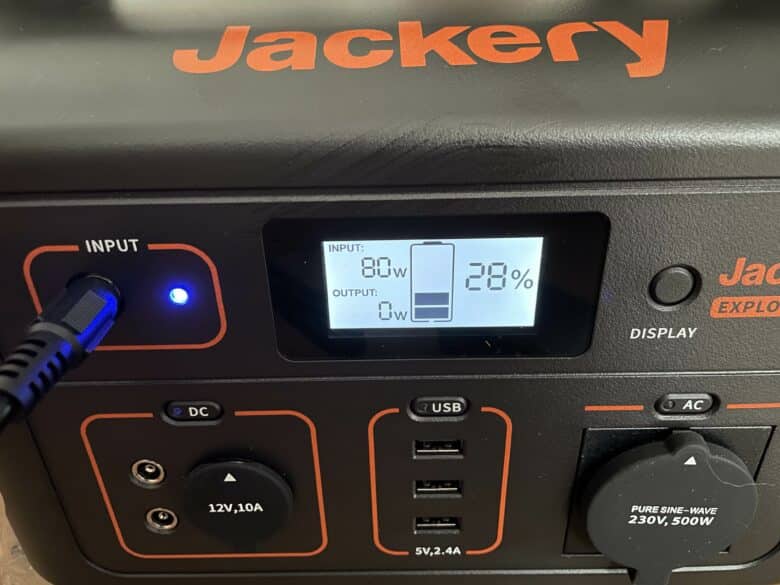
However, slow charging also has its advantages. After all, the Jackery Explorer 500 runs pleasingly quietly in contrast to the River 2 Max. I could not detect any fan noise during the test phase. This is not only due to the gentle charging process. On top of that, Jackery does not install the power supply in the power station itself. Instead, an external power supply is used. I’m more of a fan of integrated power supplies, but in view of the practical carrying case, it doesn’t bother me much here.
Doing without a power outlet thanks to SolarSaga 100
- Charging via solar panels possible
- SolarSaga 100 can be folded up
- Practical carrying handle
Campers, outdoor and festival fans don’t always have the option of accessing a power outlet. To be able to charge the Jackery Explorer 500 anyway, you can resort to suitable solar panels.
For our test of the Powerstation, we therefore also had the SolarSaga 100 available. As the name already suggests, the set consisting of two solar panels can charge the Powerstation with a maximum of 100 watts of power. For this, you simply plug them into the input for the power supply.
Due to our testing period in winter, of course, I could not reach the maximum charging power. Instead, only between 20 and 25 watts were possible in slightly sunny fall weather. Given the time of year, however, I didn’t feel the results were bad at all.
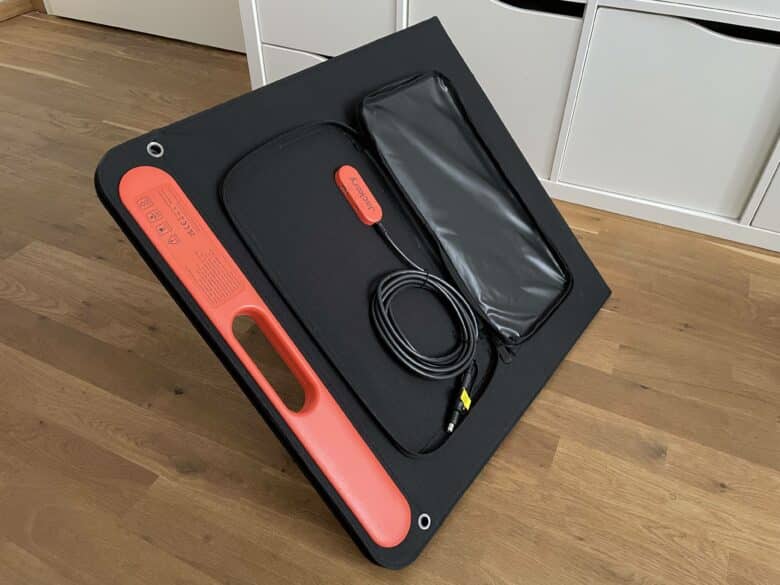
So I’m also assuming that the panels will be able to reach the 100 watts in bright sunshine. According to Jackery, you should then be able to charge the power station from 0 to 100 percent in about nine and a half hours.

A special plus point goes to the compact and practical design of the SolarSaga 100. After all, the carrying handle not only allows you to comfortably carry it from A to B. Furthermore, the two panels can be folded together very easily. Folded together, they then hold thanks to the magnetic mechanism.
The material, which is reminiscent of Teflon in its composition, also makes them pleasingly light. So this is a very good addition, which does not only serve as an emergency solution when there is no power outlet at hand. On top of that, the power station can thus be charged with self-produced green electricity.
Practical test
- High ease of use
- Omission of USB-C not up to date
In practice, I found the Jackery Explorer 500 extremely comfortable to use. To put it through its paces, I connected several electronic devices to the power station. It coped perfectly with MacBook 13, iPhone 12 Mini and iPad Air in simultaneous operation. I was also able to use my kettle and even my TV on the power station at times. As soon as the power output increases, you notice it on the Explorer 500. Finally, the mobile energy storage activates its fans when needed.

Considering the external power supply, I was a bit surprised about this. It didn’t really bother me during my testing period. However, I can imagine that one or the other might be annoyed by it. Especially if you use the power station for camping trips or as a power supply in outdoor cinemas, the fans can be a bit annoying. All in all, however, the Jackery Explorer 500 offers exactly the power supply that one expects from a power station.
Conclusion
The Jackery Explorer 500 is a very good power station, which can only not really convince in a few points. For one thing, it offers excellent workmanship. With this power station, you probably don’t have to worry about it breaking quickly thanks to the robust design. Furthermore, it is compact, lightweight and equipped with a practical carrying handle, which is why you can comfortably carry it from point A to point B. It’s just a pity that you can’t fold it in. In terms of ports, it offers a solid selection despite its compact size. I would have liked to see a second Schuko socket and USB-C, but the available ports will certainly suffice for most users. The display, on the other hand, is beyond reproach because it is easy to recognize and contains a lot of valuable information.
In practice, the mobile energy storage then scores with uncomplicated handling and reliably charges even classic household appliances. In my opinion, a real Achilles’ heel of the small power station is the charging behavior. It simply takes far too long to charge the Explorer 500 with just under 7:30 hours. The competition is simply much better here. Certainly, Jackery has decided to get as much longevity as possible out of the lithium-ion batteries. In the future, however, perhaps a switch to LiFePO4 batteries would be desirable to combine longevity with fast charging. Despite this flaw, the Jackery Explorer 500 is a really good power station that is an asset to any camping trip. However, in a head-to-head comparison, I would prefer the less expensive and better equipped EcoFlow River 2 Max.
Jackery Explorer 500
Workmanship & design
Hardware
Features
Value for money
88/100
The Jackery Explorer 500 is a good power station, but it has to admit defeat to the competition in some disciplines.




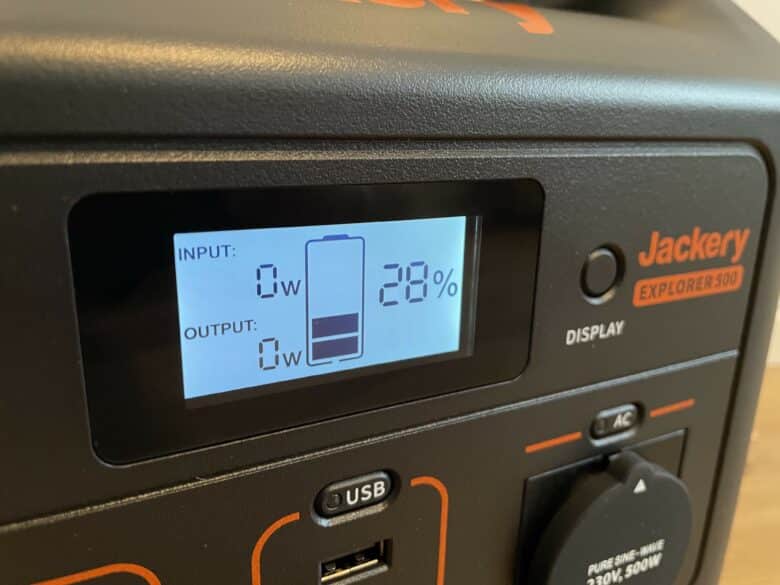
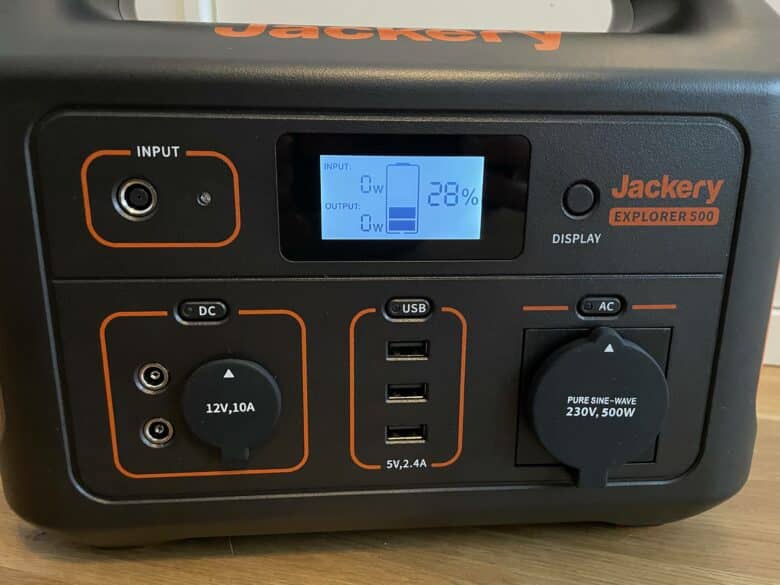
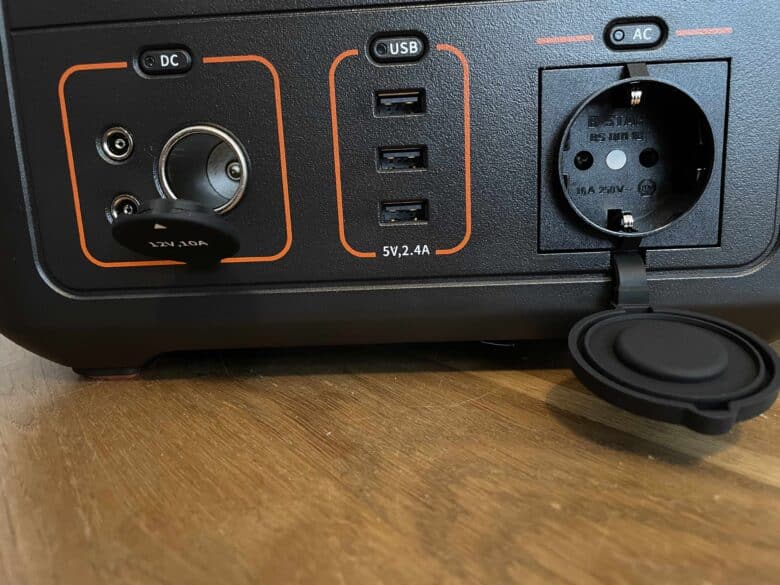










No replies yet
Neue Antworten laden...
Gehört zum Inventar
Beteilige dich an der Diskussion in der Basic Tutorials Community →